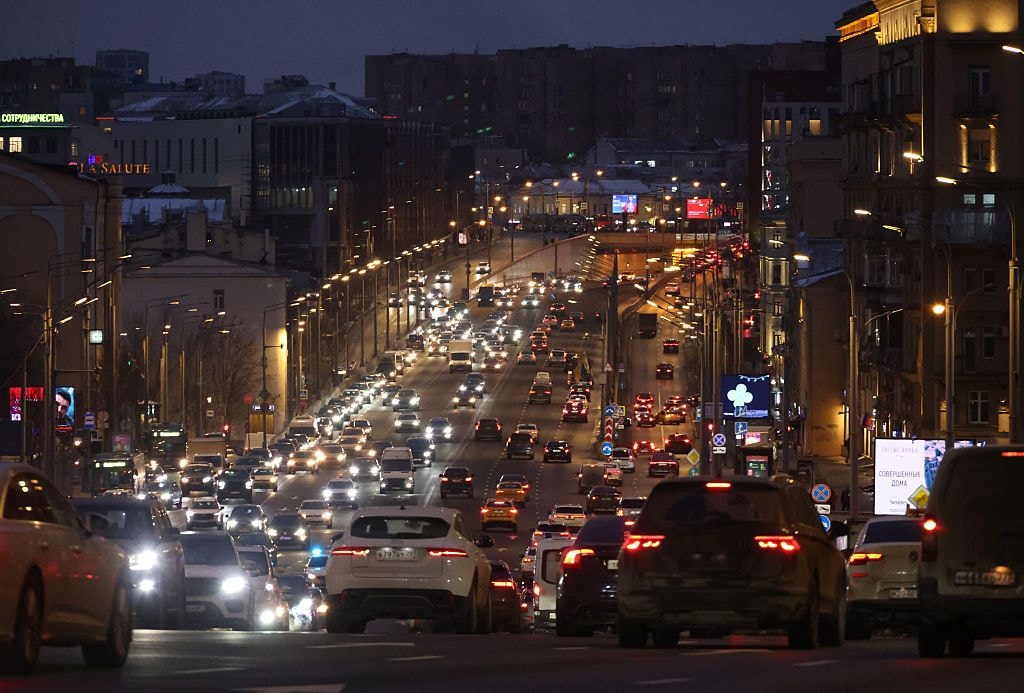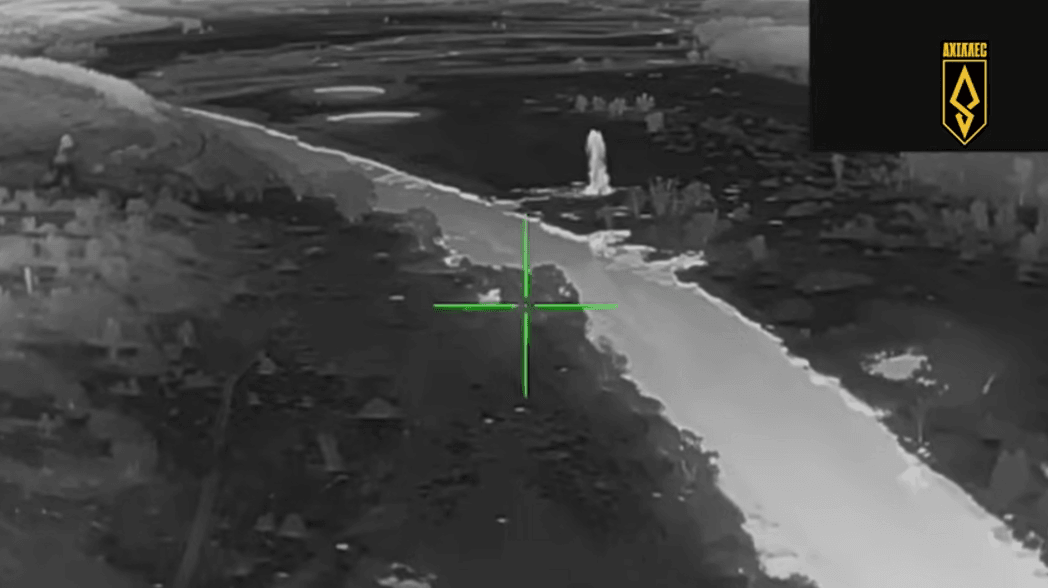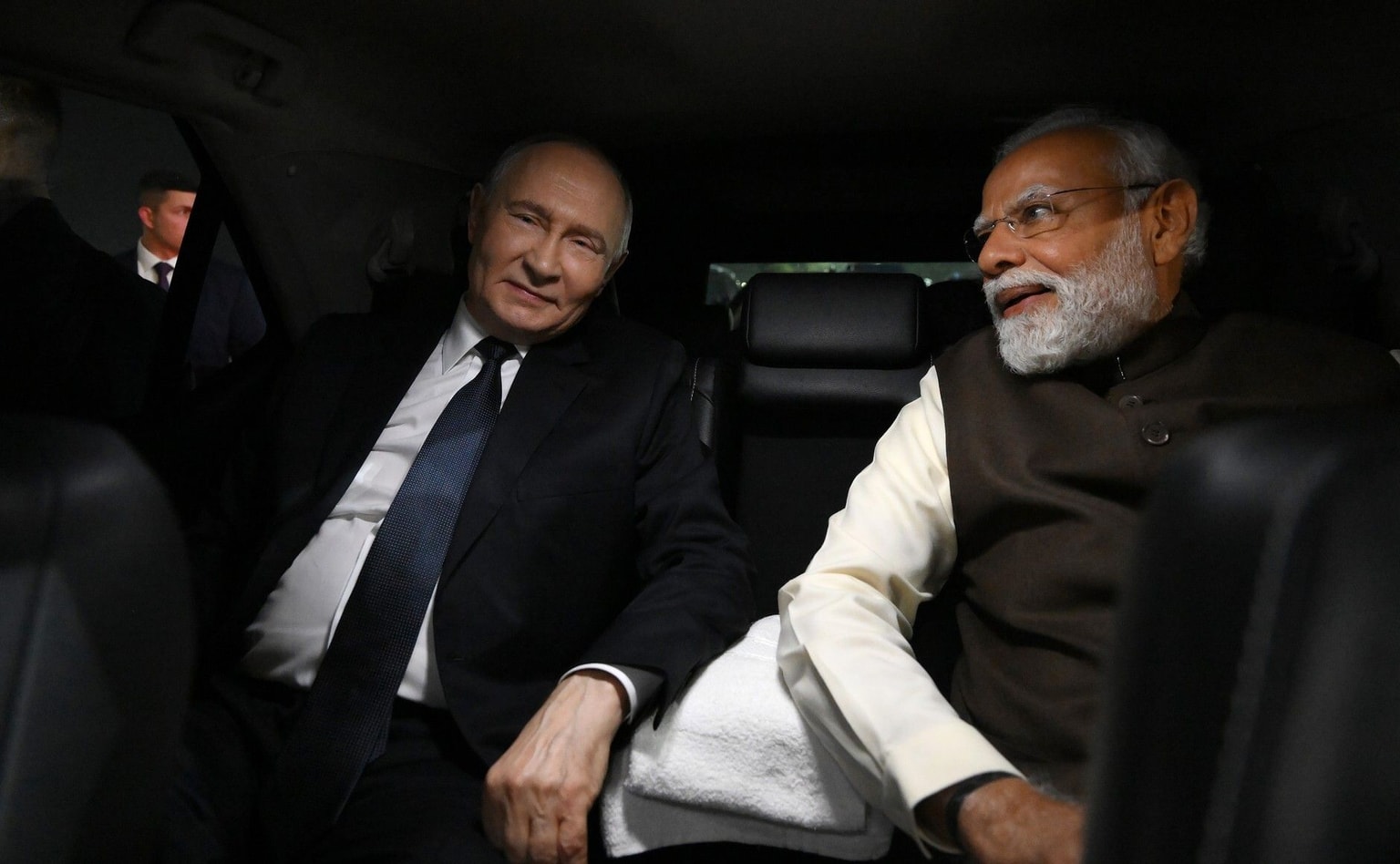
Russia’s gas sector is running out of options after end of transit deal
Gazprom's Amur Gas Processing Plant near Svobodny, Russia, on Sept. 13, 2023. (Mikhail Metzel / Pool / AFP via Getty Images)
Ukraine’s decision to end the gas transit deal with Russian energy giant Gazprom has been hailed by President Volodymyr Zelensky as one of Moscow’s biggest defeats.
"When (Russian President) Vladimir Putin was handed power in Russia over 25 years ago, the annual gas pumping through Ukraine to Europe stood at over 130 billion cubic meters. Today, the transit of Russian gas is zero. This is one of Moscow's biggest defeats," Zelensky said on Jan. 1 just as the deal expired.
Moscow and Kyiv signed the agreement in 2019 to transit 40 billion cubic meters of Russian gas annually through Ukraine to buyers in the EU. Gazprom raked in an estimated $5–$6.5 billion annually from the deal with Ukraine.
Europe began to wean itself off Russian gas after Moscow’s full-scale invasion of Ukraine while Gazprom steadily reduced flows to the EU to pressure Ukraine’s allies.
Russian pipeline gas deliveries to Europe dropped to around 29 bcm last year with around 14 bcm traveling through Ukraine before Kyiv terminated the deal, according to Argus Media, a market analyst group. The Ukrainian route transited nearly half of Russia’s pipeline gas exports to Europe, while the rest went through the TurkStream pipeline in the Balkans.
Kyiv’s decision to end the deal will further undermine gas revenue to Russia’s economy as Moscow will struggle to find alternatives to replace this lost gas market in the near future.
For now, Russia still has its claws on Europe with cheap liquified natural gas (LNG) and growing gas transit through the TurkStream pipeline. Those two revenue streams could run out, however, as sanctions bite and Europe looks to continue distancing itself from Russian energy.
The majority of European states have already looked to gas alternatives from the U.S., Norway, and Algeria to reduce dependency on Russia. The end of the agreement forces those who clung to the Ukraine route, namely Slovakia, Hungary, and Austria, to find other options.
“This development is a step toward a Europe that is less susceptible to energy blackmail, marking a geopolitical win for Ukraine and its allies,” the former head of Ukraine’s gas transport operator (GTSOU) Sergiy Makogon told the Kyiv Independent.
Limited options
The last three years have put a “significant strain” on Gazprom, Makogon noted. The company suffered a sharp reduction in gas production from 515 bcm in 2021 to 355 bcm in 2023, which it largely blamed on Europe’s move away from Russian gas, while also paying hefty taxes to prop up Moscow’s war machine.
Europe’s efforts to wean itself off Russian gas meant volumes dropped from 150 bcm pre-war to less than 50 bcm in 2023, EU Energy Commissioner Kadri Simson said on Sept. 11, 2024. The end of the Ukraine route is another amputation for Gazprom after the loss of the Nord Stream 1 pipeline and the Yamal pipeline through Poland in 2022.
“Moscow has limited options for now to sell more gas to other markets to make up for the loss of Ukrainian transit,” Natasha Fielding, the head of European gas pricing at Argus Media, told the Kyiv Independent.
"Moscow has limited options for now to sell more gas to other markets to make up for the loss of Ukrainian transit."
Russia’s final lifeline to Europe is the TurkStream pipeline that delivers Russian gas to Greece, the Western Balkans, and Hungary via Turkey. TurkStream is sanctioned by the U.S. and a Dutch court withdrew the export license of the Netherlands-based Russian company operating the pipeline in September 2022 but renewed it weeks later following pressure from Moscow and Budapest.


“Europe can completely phase out Russian pipeline gas including by stopping the TurkStream pipeline,” said Martin Vladimirov, the Director of the Energy and Climate Program at the Center for the Study of Democracy (CSD).
Even if Europe does not embargo TurkStream, there is little room for more gas to flow through the pipeline. Deliveries jumped from 12.2 bcm in 2023 to 14.95 bcm in 2024, but the pipeline has a maximum capacity of 15.75 bcm per year, Fielding notes.
Zelensky also mentioned the possibility of increasing U.S. gas imports to Europe which would lower prices. If the U.S. boosts LNG exports by 22.5 bcm this year, it would “wipe out” Russian pipeline gas supply in Central and Eastern Europe, said Vladimirov.
Even China, which overtook Europe as the biggest guzzler of Russian pipeline gas last year, consuming 31 bcm, is a limited market for now, Fielding said. Russia cannot reroute gas flows through the 38 bcm “Power of Siberia” pipeline as it is not connected to the gas fields serving Europe and its transit already hit full capacity in December. Russia’s two future pipeline projects with China are also yet to get off the ground.
“Russia will find it hard to get to pre-war gas export levels even if it is able to redirect exports to Asia after potentially losing all gas exports to Europe by the end of the decade,” Vladimirov said.
The LNG question
Russia’s main LNG company, Novatek, has hooked European companies on its cheap LNG with 20% discounts leading to record-high purchases in 2024 of nearly 17 million tons, according to the CSD.
While Brussels has not directly banned the chilled Russian fuel, it has sanctioned LNG transshipment — transferring LNG from one ship to another— making it harder for Moscow to sell beyond the European market.
This could have helped spike Russian LNG sales to the EU, said Georg Zachmann, a senior fellow at Bruegel, a think tank, and at the Helmholtz Center Berlin, a research institute.
The EU gobbled up 48% of Russia’s total LNG exports in November 2024. One of the biggest consumers, France, imported Russian LNG worth 252 million euros ($262 million) during that month, according to the Center for Research on Energy and Clean Air (CREA).
While less profitable than pipeline gas, Russia still makes close to $2 billion a month from its LNG sales to Asia and Europe, said Vladimirov.
“With no sanctions imposed on Russian LNG, companies are operating in their own self-interest and buying increasing quantities of gas from the cheapest supplier — Russia,” Vaibhav Raghunandan, EU-Russia Analyst at CREA, told the Kyiv Independent.
“With no sanctions imposed on Russian LNG, companies are operating in their own self-interest and buying increasing quantities of gas from the cheapest supplier — Russia.”
Despite this, Russia’s LNG sector is constrained. Its LNG terminals are already producing at near full capacity and it cannot easily reroute the gas originally transited through Ukraine to its two LNG export plants.
In theory, Russia’s new LNG export projects, like the Arctic LNG 2 project, could bolster sales abroad by 80 bcm, Vladimirov said. But Western sanctions on all new and future projects, including on Arctic LNG 2, are biting Moscow’s progress by blocking its access to critical equipment like tankers and liquefaction technology.

The Arctic LNG 2 project was launched in late 2023 and aimed to produce 20 bcm of gas annually, but Novatek cut production to almost zero in November 2024. Novatek’s setbacks show that “it would be very difficult for Russia not only to complete the infrastructure but also buy the ice-breaker LNG carriers necessary to facilitate bigger exports to Asia,” said Vladimirov.
Moscow has increasingly relied on its shadow tankers to continue its LNG trade as sanctions hamper shipping logistics, he added.
Finding secure buyers if output is increased will also be challenging, particularly if the EU heeds the calls to ban Russian LNG imports this year. Threats of secondary sanctions are also likely to turn off potential buyers.
Fall out
Russia paid Ukraine $800 million annually to transport its gas. However, net revenue only totaled between $200-300 million after transit costs, according to Makogon.
Kyiv considered the economic consequences but ultimately made the decision to kill the deal in the “interest of national security,” the Energy Ministry told the Kyiv Independent. Moreover, it also undermines Russia’s leverage on Europe’s energy sector.
“Russia has used gas transit as both an economic and political weapon, influencing EU policies and creating divisions among member states,” Makogon said.
“Russia has used gas transit as both an economic and political weapon, influencing EU policies and creating divisions among member states.”
Europe will feel an expensive knock-on effect in exchange for its security, Fielding said, as Slovakia, Austria, and Czechia will have to pay more to source and transport non-Russian gas. Western Europe, particularly Germany, will have to increase gas flows to the east to replace the lost Russian gas, she added.

Slovakia, which could pay an extra 90 million euros to replace the Russian gas this year, has ramped up rhetoric against Ukraine with Prime Minister Robert Fico threatening to cut electricity exports to Ukraine last month. However, the country’s electricity transmission system operator, SEPS, confirmed on Jan 4 that it will continue to send electricity to Ukraine.
“Slovakia and Austria had long prepared for this moment by signing contracts with alternative suppliers and keeping their underground gas reserves topped up. They must now put this plan into action,” Fielding said.
Ukraine is also preparing for Russia to attack its gas transit network in retaliation, said CEO of the GTSOU Dmytro Lyppa on Dec. 4. Russia has already relentlessly targeted Ukrainian energy infrastructure, including gas storage sites, and Makogon said that Ukraine is “well prepared” to repair and restore damaged infrastructure.
“Additionally, we would not hesitate to retaliate by targeting Russia’s gas networks and storages, just as we have targeted their oil refineries,” he added.









